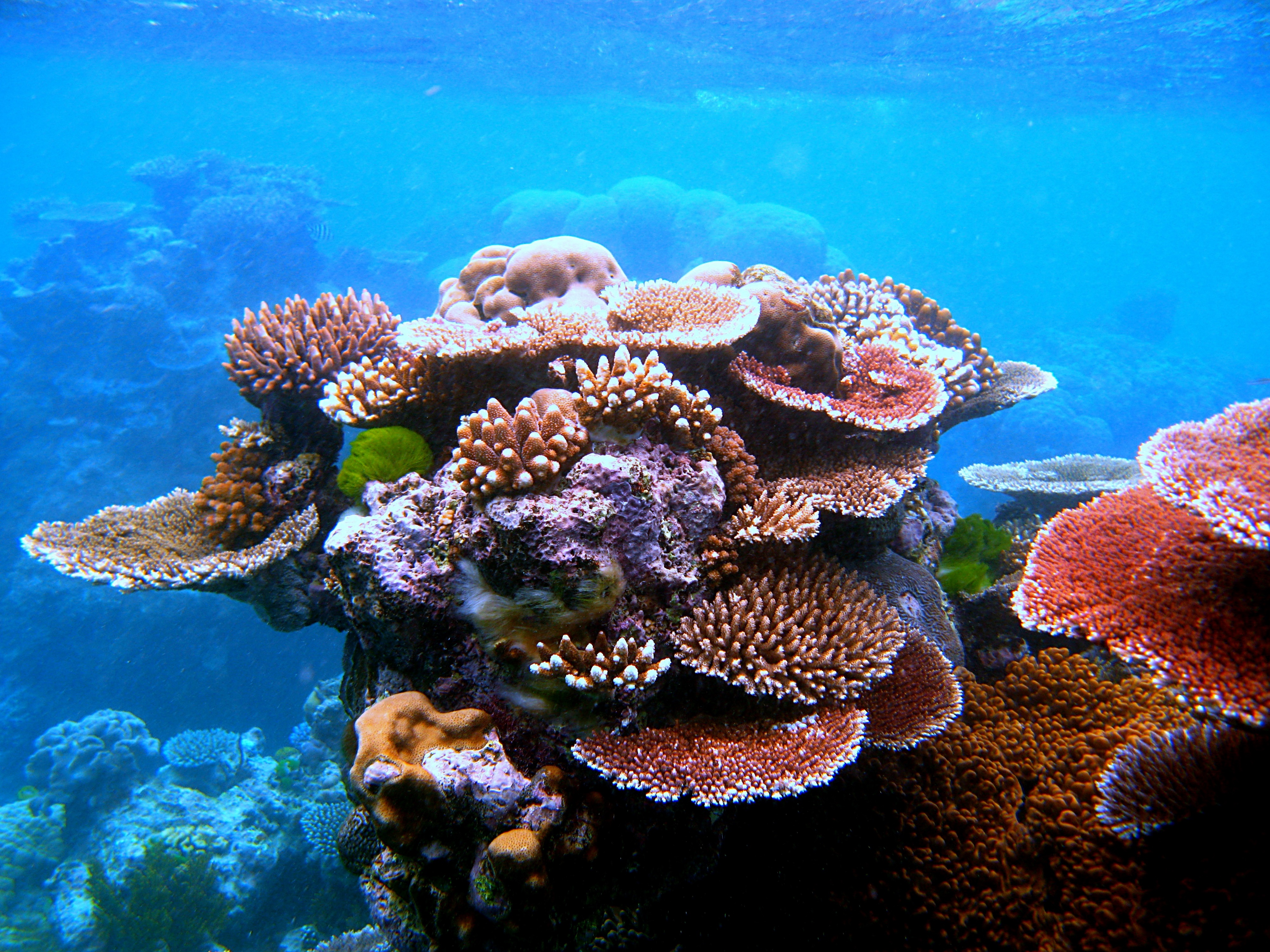|
Costa (coral)
In corals, a costa (plural costae) is one of the vertical plates lying outside the corallite wall, a continuation of a septum In biology, a septum (Latin for ''something that encloses''; plural septa) is a wall, dividing a cavity or structure into smaller ones. A cavity or structure divided in this way may be referred to as septate. Examples Human anatomy * Interat ... (plural septa) which lies inside the wall. The costae may continue to the edge of the colony and in solitary species, such as those in the family Fungiidae, refers to the ridges on the underside of the coral. References {{reflist Cnidarian anatomy ... [...More Info...] [...Related Items...] OR: [Wikipedia] [Google] [Baidu] |
Coral
Corals are marine invertebrates within the class Anthozoa of the phylum Cnidaria. They typically form compact colonies of many identical individual polyps. Coral species include the important reef builders that inhabit tropical oceans and secrete calcium carbonate to form a hard skeleton. A coral "group" is a colony of very many genetically identical polyps. Each polyp is a sac-like animal typically only a few millimeters in diameter and a few centimeters in height. A set of tentacles surround a central mouth opening. Each polyp excretes an exoskeleton near the base. Over many generations, the colony thus creates a skeleton characteristic of the species which can measure up to several meters in size. Individual colonies grow by asexual reproduction of polyps. Corals also breed sexually by spawning: polyps of the same species release gametes simultaneously overnight, often around a full moon. Fertilized eggs form planulae, a mobile early form of the coral polyp which, when matu ... [...More Info...] [...Related Items...] OR: [Wikipedia] [Google] [Baidu] |
Corallite
A corallite is the skeletal cup, formed by an individual stony coral polyp, in which the polyp sits and into which it can retract. The cup is composed of aragonite, a crystalline form of calcium carbonate, and is secreted by the polyp. Corallites vary in size, but in most colonial corals they are less than in diameter. The inner surface of the corallite is known as the calyx. The vertical blades inside the calyx are known as septa and in some species, these ridges continue outside the corallite wall as costae In vertebrate anatomy, ribs ( la, costae) are the long curved bones which form the rib cage, part of the axial skeleton. In most tetrapods, ribs surround the chest, enabling the lungs to expand and thus facilitate breathing by expanding the c .... Where there is no corallite wall, the blades are known as septocostae. The septa, costae and septocostae may have ornamentation in the form of teeth and may be thick, thin or variable in size. Sometimes there are paliform l ... [...More Info...] [...Related Items...] OR: [Wikipedia] [Google] [Baidu] |
Septum (coral)
In corals, a septum (plural septa) is one of the radiating vertical plates lying within the corallite wall. Outside the corallite wall these plates are known as costae In vertebrate anatomy, ribs ( la, costae) are the long curved bones which form the rib cage, part of the axial skeleton. In most tetrapods, ribs surround the chest, enabling the lungs to expand and thus facilitate breathing by expanding the c ... (singular costa). The septa may be thick, thin or vary in size. They may have teeth which range from needle-like to blade-like and are often characteristic of different genera. References {{reflist Cnidarian anatomy ... [...More Info...] [...Related Items...] OR: [Wikipedia] [Google] [Baidu] |
Fungiidae
The Fungiidae () are a family of Cnidaria, commonly known as mushroom corals or plate corals. The family contains thirteen extant genera. They range from solitary corals to colonial species. Some genera such as '' Cycloseris'' and ''Fungia'' are solitary organisms, ''Polyphyllia'' consists of a single organism with multiple mouths, and '' Ctenactis'' and ''Herpolitha'' might be considered as solitary organisms with multiple mouths or a colony of individuals, each with its separate mouth. Characteristics Species are generally solitary marine animals capable of benthic locomotion. These corals often appear to be bleached or dead. In most genera, a single polyp emerges from the center of the skeleton to feed at night. Most species remain fully detached from the substrate in adulthood. Some are immobile as well as colonial. Ecology Some species of mushroom coral such as '' Fungia repanda'' and '' Ctenactis echinata'' are able to change sex. This is posited to take place in respo ... [...More Info...] [...Related Items...] OR: [Wikipedia] [Google] [Baidu] |

